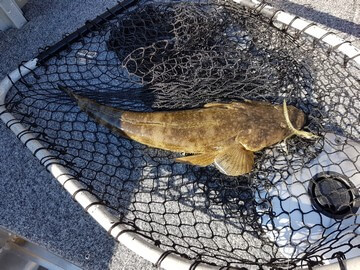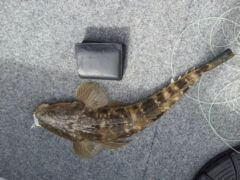Flathead are definitely one of the easier species of estuary fish to catch on fly. They will respond to a wide range of traditional and specialist flies and you will catch them as a by catch when your fishing small flies (from a flathead’s perspective) to species such as yellowfin bream and whiting and relatively big flies (from a flathead’s perspective) even when fishing for barra.

Boyne River on Mud prawn 
South Trees Inlet on Articulated Swimmer
Best times
The phases of the moon influences the occurrence of bite windows
- The best time to fish for flathead, and most fish, is the first 7 days after the new moon.
- As for all fishing the time just before and after sunset and dawn can be a significant time for a bite window.
Other considerations
- Generally flathead are most active when the tide is falling and on the ebb of the falling tide.
- If you want to increase your catch rate keep in mind that flathead are predominately ambush predators and generally follow the ebbing tide out and lay in wait, often partially covered with a dusting of sand, to target small fish, crustaceans including crabs and prawns, molluscs and worms to be flushed off the flats or from amongst mangrove roots and other edge structure in rivers and coastal shorelines into deeper water.
- Hot spots are those areas where the receding water concentrates food items so focus on areas such as gutters and channels that drain sand or mud banks and mangrove and vegetated edges of rivers and coastal areas.
- As the tide ebbs and the tides start to come in there will be less the concentration of the small fish, crustaceans including crabs and prawns, molluscs and worms that the flathead have been feeding on and the flathead will disperse making them harder to locate. At these time you will still find them laying in wait in channels particularly in inundations and drop off’s caused by the tidal run, along the edge of weed banks, and behind structure such as rocks and drowned timber.
- Whilst flathead generally feed as ambush predators during the day they feed much more openly at night not only spending plenty of time as ambush predators but also when required foraging for food more widely. Prawns in particular but also small bait fish such as poddy mullet are often more active at night and flathead respond to that by comfortably feeding throughout the water column and even take targets from the surface particularly in shallow water.
Stealth
Keep in mind that flathead are easily spooked so you have to be stealthy in your movements and casts.
- So when you approach an area you going to fish do it slowly and if available quietly under the power of your electric motor and take advantage of any cover that’s available. Don’t cast a long shadow over or motor over over the water your going to fish. Longer casts are important and cast to the side of any fish your targeting.
- If your using an anchor deploy and retrieve it slowly and quietly so that there is no bumps or chain noises that will scare fish.
My third blog will be “Flies for flathead”
